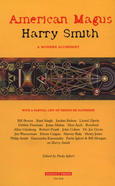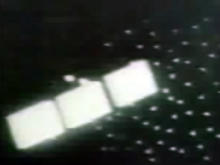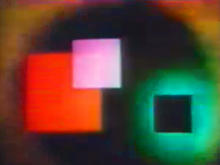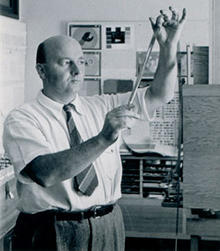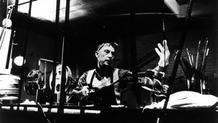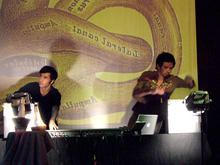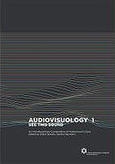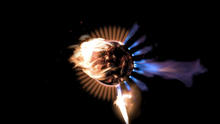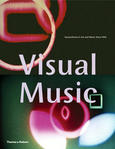Harry Smith
(1923-1991) was an American archivist, ethnomusicologist, student of anthropology, record collector, experimental filmmaker, artist, bohemian and mystic. He had a lifelong interest in the occult and esoteric fields of knowledge
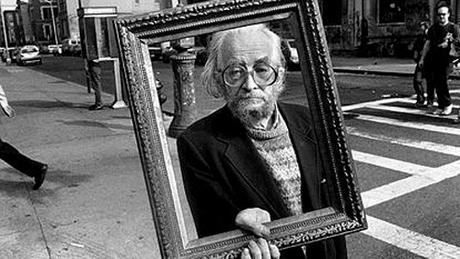
Photo: Brian Graham, 1988
Harry Smith was an artist whose activities and interests put him at the center of the mid twentieth-century American avant-garde. Although best known as a filmmaker and musicologist, he frequently described himself as a painter, and his varied projects called on his skills as an anthropologist, linguist, and translator. He had a lifelong interest in the occult and esoteric fields of knowledge, leading him to speak of his art in alchemical and cosmological terms.
Harry Smith was born May 29, 1923, in Portland, Oregon, and his early childhood was spent in the Pacific Northwest. Smith's father, Robert James Smith, was a watchman for the local salmon canning company. His mother, Mary Louise, taught school on the Lummi Indian reservation. Robert Smith's grandfather had been a prominent Freemason who was a Union General in the Civil War. Harry's parents were Theosophists, who exposed him to a variety of pantheistic ideas, which persisted in his fascination with unorthodox spirituality and comparative religion and philosophy. By the age of 15, Harry had spent time recording many songs and rituals of the Lummi and Samish peoples and was compiling a dictionary of several Puget Sound dialects. He later became proficient in Kiowa sign-language and Kwakiutl. In addition to developing complicated systems for transcription, he also amassed an important collection of sacred religious objects, one of a number of museological endeavors that occupied Smith throughout his life.
Smith studied anthropology at the University of Washington for five semesters between 1943 and 1944. After a weekend visit to Berkeley, during which he attended a Woody Guthrie concert, met members of San Francisco's bohemian community of artists and intellectuals, and experimented with marijuana for the first time, Smith decided that the type of intellectual stimulation he was seeking was unavailable in his student life.
It was in San Francisco that Smith began to build a reputation as one of the leading American experimental filmmakers. He showed frequently in the "Art in Cinema" screenings organized by Frank Stauffacher at the San Francisco Museum of Modern Art. Smith not only became close with other avant-garde filmmakers in the Bay Area, such as Jordan Belson and Hy Hirsh, but traveled frequently to Los Angeles to see the films of Oskar Fischinger, Kenneth Anger, and other Southern Californians experimentalists. Smith developed his own methods of animation, using both stop motion collage techniques and, more uniquely, hand-painting directly on film. Often a single film required years of painstakingly precise labor. While a few other filmmakers had employed similar frame-by-frame processes, few matched the complexity of composition, movement, and integration in Smith's work. Smith's films have been interpreted as investigations of conscious and unconscious mental processes, while his fusion of color and sound are acknowledged as precursors of sixties psychedelia. At times, Smith spoke of his films in terms of synaethesia, the search for correspondences between color and sound and sound and movement.
Smith's films cannot be easily separated from his paintings, and in both he was influenced by the abstract work of Kandinsky, Marc, and others who formed the foundation of the collection of the Museum of Non-Objective Painting (later the Guggenheim Museum) in New York. Smith developed a relationship with Hilla Rebay, the museum's director, and she arranged for Smith to come to New York and to receive a Solomon Guggenheim grant in 1950. He moved to New York permanently in the early fifties. In need of money, he offered to sell his extraordinary record collection of American vernacular music to Folkways Records. Instead, Moses Asch, the label's president, challenged Smith to cull his collection into an anthology.
In 1952 Folkways issued Smith's multi-volume Anthology of American Folk Music. The Anthology was comprised entirely of recordings issued between 1927 (the year electronic recording made accurate reproduction possible) and 1932, the period between the realization by the major record companies of distinct regional markets and the Depression's stifling of folk music sales. Released in three volumes of two discs each, the 84 tracks of the anthology are recognized as having been a seminal inspiration for the folk music revival of the 1950s and 1960 (the 1997 reissue by the Smithsonian was embraced with critical acclaim and two Grammy awards). Traditional American music was only one of Smith's musical interests. From the late 1940s, he was a passionate jazz enthusiast, going so far as to create paintings that are note-by-note transcriptions of particular tunes. He spent much of the fifties in the company of jazz pioneers like Charlie Parker, Dizzy Gillespie, and Thelonious Monk. Smith's involvement with recording continued into the sixties and seventies as he produced and recorded the first album by the Fugs in 1965. His long term friendships with many of the Beat writers led to the release of Allen Ginsberg's First Blues in 1976 as well as unreleased recordings of Gregory Corso's poetry and Peter Orlovsky's songs. Smith spent part of this era living with groups of Native Americans, and this resulted in his recording the peyote songs of the Kiowa Indians (Kiowa Peyote Meeting, Folkways, 1973).
Smith's broad range of interests resulted in a number of collections. He donated the largest known paper airplane collection in the world to the Smithsonian Institution's National Air and Space Museum. He was a collector of Seminole textiles and Ukrainian Easter Eggs. He also considered himself the world's leading authority on string figures, having mastered hundreds of forms from around the world.
Smith spent his last years (1988-1991) as "shaman in residence" at Naropa Institute, where he offered a series of lectures, worked on sound projects, and continued collecting and researching. In 1991 he received a Chairman's Merit Award at the Grammy Awards ceremony for his contribution to American Folk Music. Upon receiving the award, he proclaimed, "I'm glad to say my dreams came true. I saw America changed by music."
Harry Everett Smith died at the Chelsea Hotel on November 27, 1991.
Source: Harry Smith Archive
